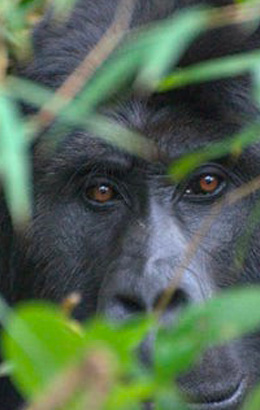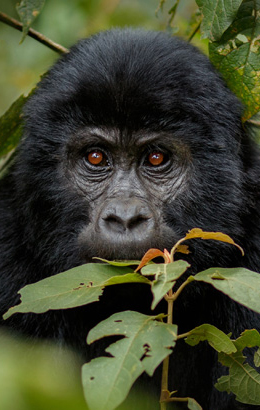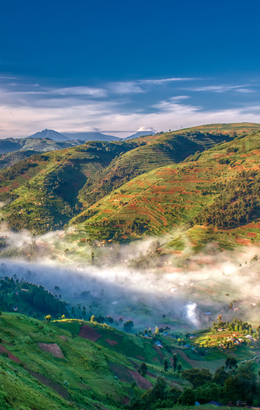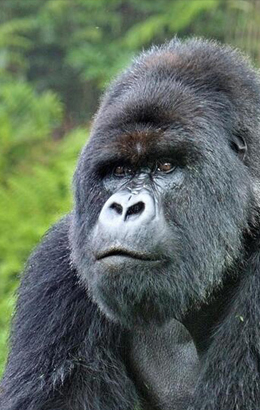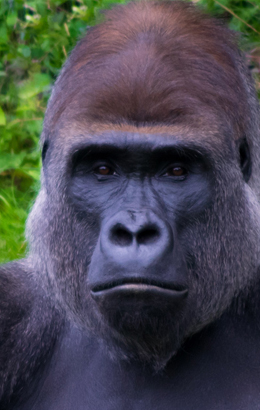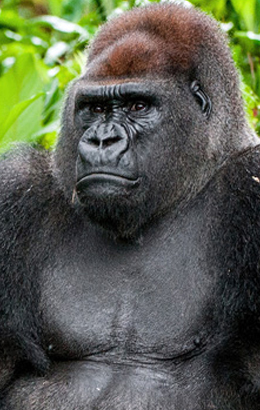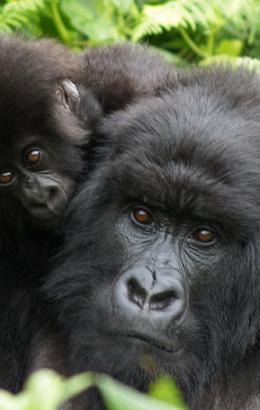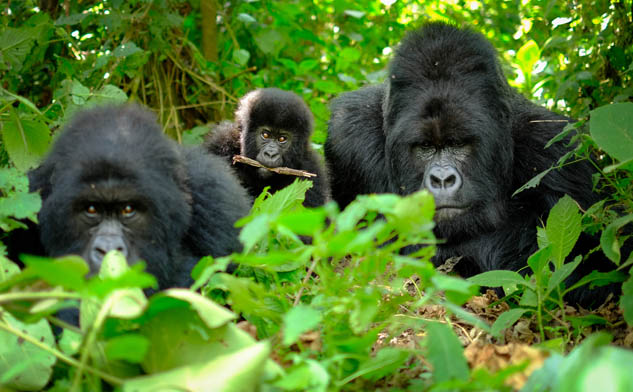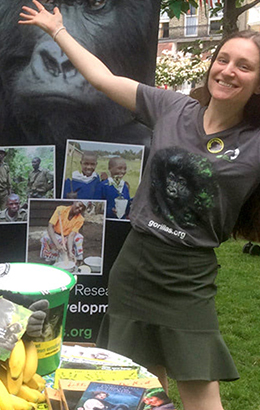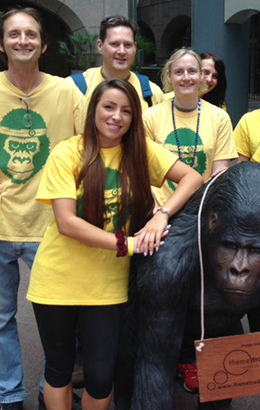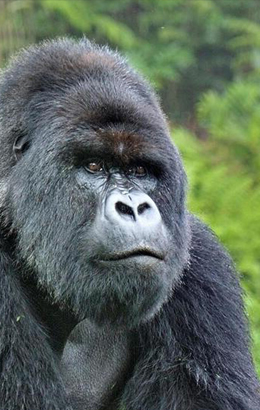(Scientific name: Gorilla gorilla gorilla)
Mountain Gorillas
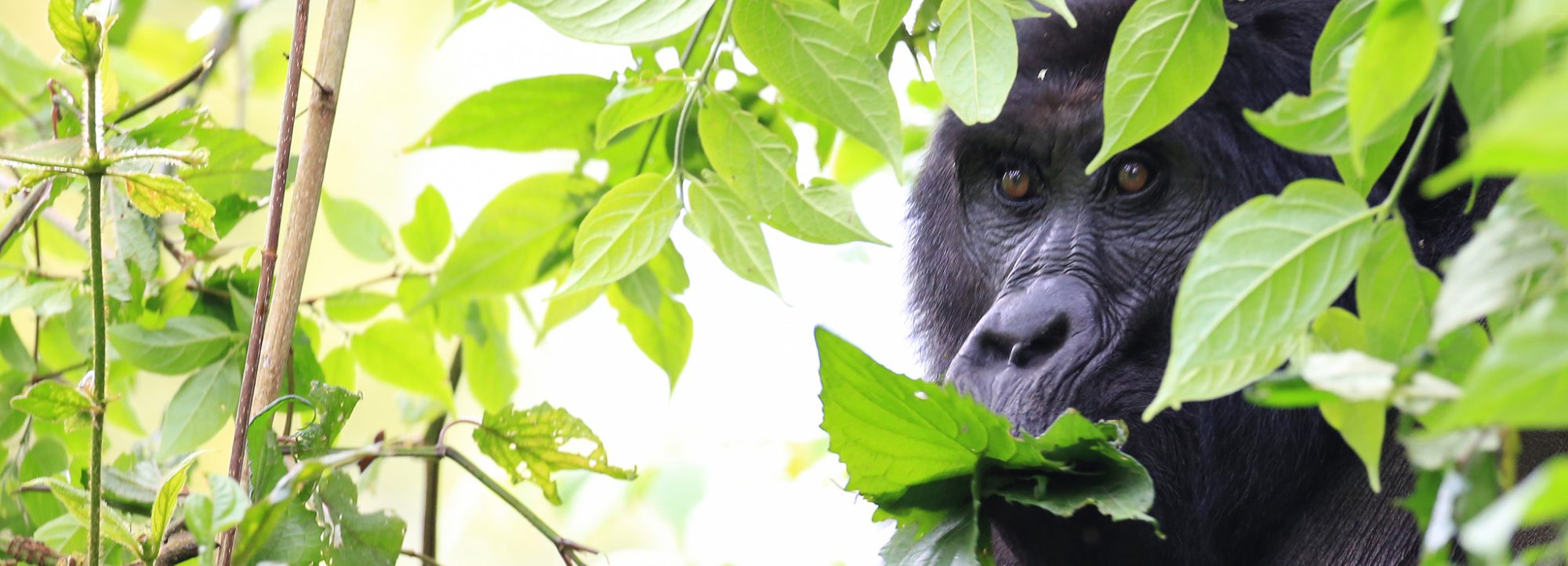
The mountain gorilla is a strong, peaceful ape which inhabits the volcanic African’s slopes.
Although the mountain gorilla has very few natural predators, the species has been pushed to the brink of extinction due to human activity. Habitat loss, deforestation, poaching, civil war, and disease are all real threats to mountain gorillas. The mountain gorilla is the most endangered subspecies of gorilla.
Central Africa
Mountain gorillas live in the misty mountain forests of the Virunga Massif and the Bwindi Impenetrable Forest in central Africa.
These gorillas, as their name suggests, live in forest high in the mountains, at altitudes of up to 13,000 feet. They have longer, thicker fur, and more of it, than other gorilla subspecies, allowing them to live in colder climates where temperatures can drop below freezing.
Like all gorillas, mountain gorillas are highly sociable and live in family groups led by the dominant silverback. They are largely herbivorous and eat a variety of shoots, fruit, leaves and bark – wild celery is a big favourite.
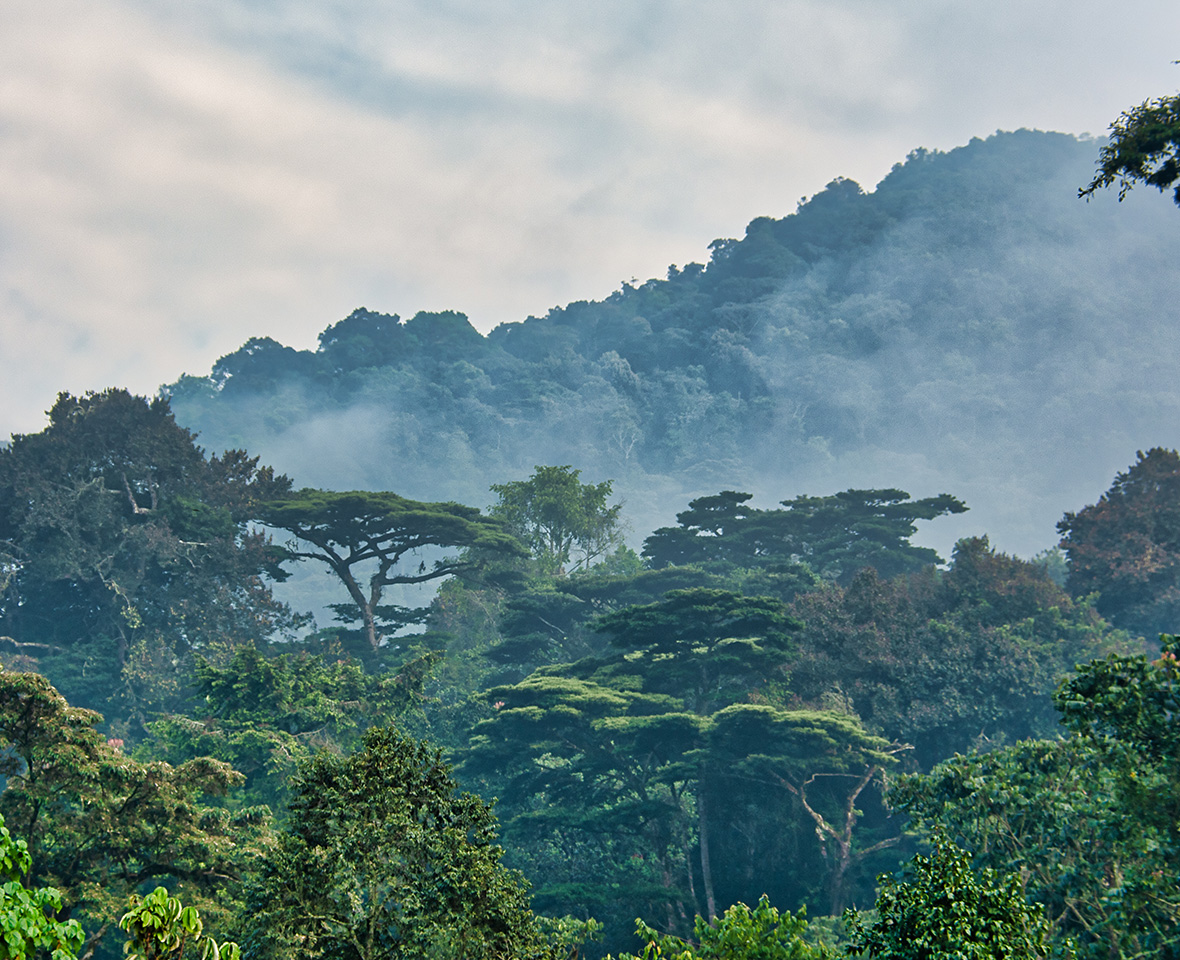
Mountain Gorilla Population
Number remaining – Fewer than 1,200 mountain gorillas remain in the wild
Mountain gorillas are considered endangered by IUCN’s Red List.
Due to conservation efforts, and despite ongoing civil unrest, poaching, habitat loss, and a global pandemic, the population of mountain gorillas have shown an increase in recent years.


Mountain gorilla habitat and homeland
Uganda, Rwanda and Democratic Republic of Congo
Currently, the mountain gorilla’s habitat is limited to protected national parks in two regions of Africa. One group of gorillas lives in the Bwindi Impenetrable National Park in Uganda. The other group is spread over three national parks in the Virungas mountain region of the Democratic Republic of Congo, Uganda, and Rwanda.
Bwindi Impenetrable Forest, Uganda
Mgahinga National Park, Uganda
Volcanoes National Park, DRC
Rwanda; Virunga National Park, DRC
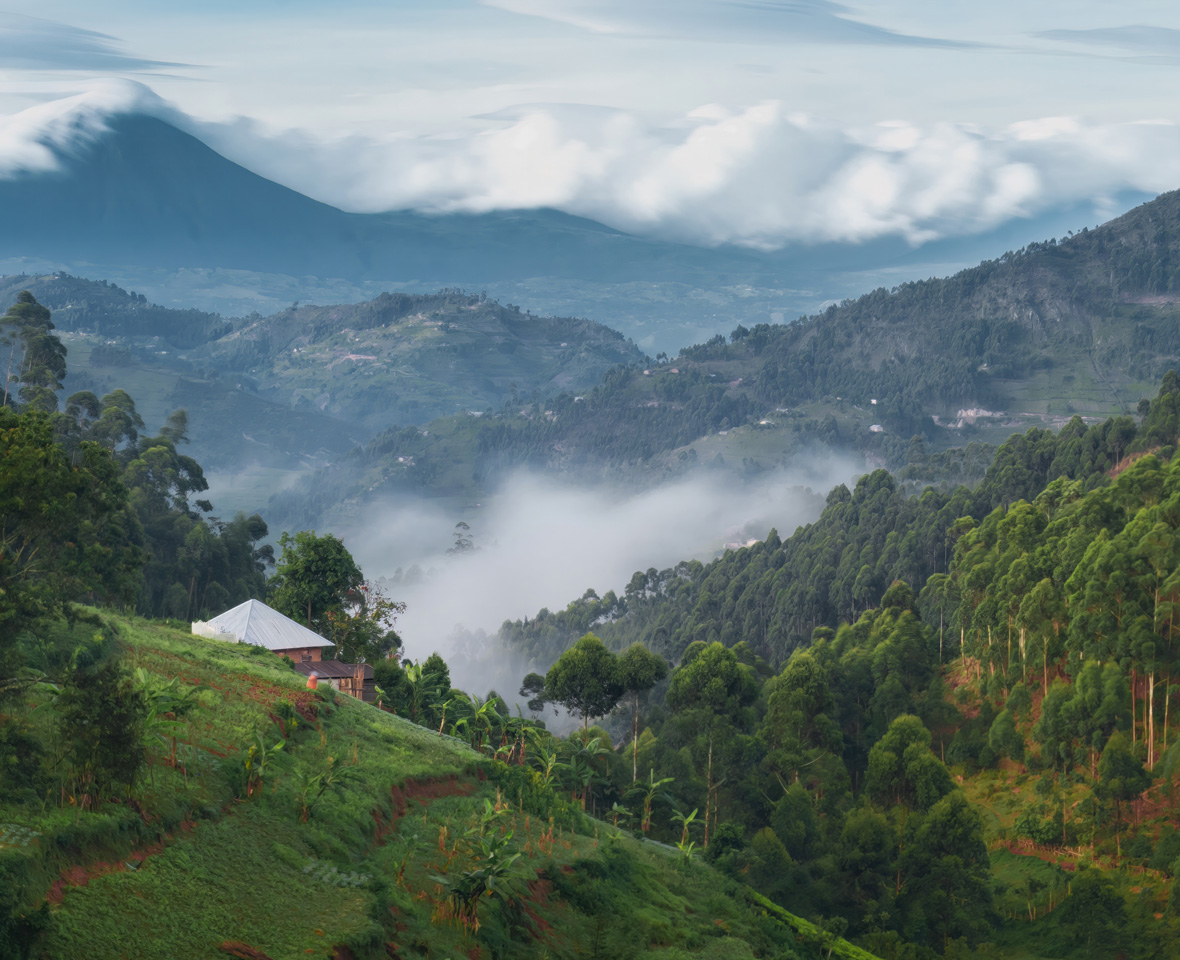
Mountain gorilla threats
Habitat loss, deforestation, poaching, civil unrest and disease
Today, mountain gorillas are threatened not due to a demand for their meat or their infants, but due to a demand for the lush forest in which they live. For the poverty-stricken communities living around the gorilla habitat it is the forest that provides them with many of their basic human needs, and in the war torn areas of DR Congo these needs are exaggerated.
Habitat loss takes away the gorillas’ source of food and shelter, and diminished territory to roam in can affect their breeding patterns.
Mountain gorillas are also at risk from poachers. While they do not deliberately hunt gorillas, they set traps on the forest floor where the gorillas can get caught and die if they are not rescued in time.

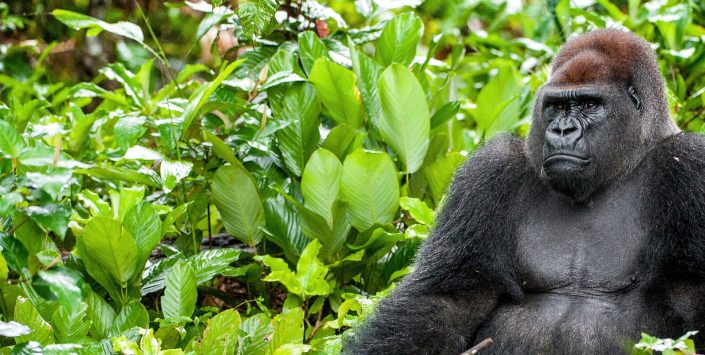
Western lowland gorilla
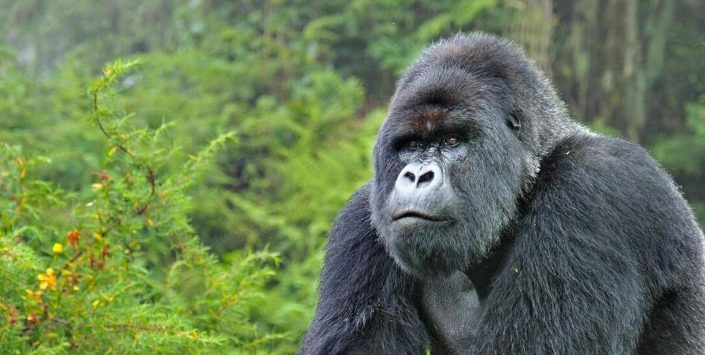
Cross river gorilla
(Scientific name: Gorilla gorilla diehli)
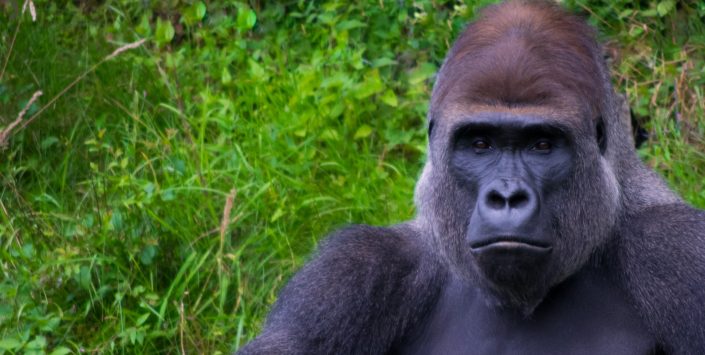
Eastern lowland or Grauer’s gorilla
(Scientific name: Gorilla beringei graueri)
You can make a difference
We are dedicated to safeguarding the future of wild gorillas, but we cannot do it alone. A donation today, no matter how big or small, will support our vital work in protecting the worlds remaining wild gorillas.
There are just over 1,000 mountain gorillas left in the wild. Adopt a gorilla today for just £4 a month and help save a species on the edge of extinction.
We’d love to hear from you in regards to our work in Africa to save the world’s last remaining gorillas.
Keep up-to-date with the latest news, events and campaigns from the Gorilla Organization.
